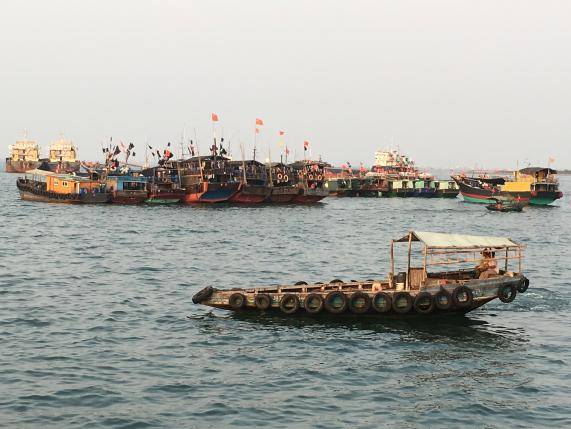BAIMAJING, CHINA: The fishing fleet based in this tiny port town on Hainan island is getting everything from military training and subsidies to even fuel and ice as China creates an increasingly sophisticated fishing militia to sail into the disputed South China Sea.
The training and support includes exercises at sea and requests to fishermen to gather information on foreign vessels, provincial government officials, regional diplomats and fishing company executives said in recent interviews.
“The maritime militia is expanding because of the country’s need for it, and because of the desire of the fishermen to engage in national service, protecting our country’s interests,” said an advisor to the Hainan government who did not want to be named.
But the fishing militia also raises the risk of conflict with foreign navies in the strategic waterway through which $5 trillion of trade passes each year, diplomats and naval experts say.
The United States has been conducting sea and air patrols near artificial islands China is building in the disputed Spratlys archipelago, including by two B-52 strategic bombers in November. Washington said in February it would increase the “freedom of navigation” sail-bys around the disputed sea.
BASIC MILITARY TRAINING
The city-level branches of the People’s Armed Forces Department provide basic military training to fishermen, said the Hainan government advisor. The branches are overseen by both the military and local Communist Party authorities in charge of militia operations nationwide.
The training encompasses search and rescue operations, contending with disasters at sea, and “safeguarding Chinese sovereignty”, said the advisor who focuses on the South China Sea.
The training, which includes exercises at sea, takes place between May and August and the government pays fishermen for participating, he said.
Government subsidies encourage fishermen to use heavier vessels with steel – as opposed to wooden – hulls.
The government has also provided Global Positioning Satellite equipment for at least 50,000 vessels, enabling them to contact the Chinese Coast Guard in maritime emergencies, including encounters with foreign ships, industry executives said.
RULES OF ENGAGEMENT
Chen said his fishermen stop at Woody Island in the Paracel islands, where China recently installed surface-to-air missiles, to refuel and communicate with Chinese Coast Guard vessels.
They look forward to using similar facilities China is developing in the Spratly Islands, he said.
China has been pouring sand from the seabed onto seven reefs to create artificial islands in the Spratlys. So far, it has built one airstrip with two more under construction on them, with re-fuelling and storage facilities.
“This all points to the need for establishing agreed protocols for ensuring clear and effective communications between civilian and maritime law enforcement vessels of different countries operating in the area,” said Michael Vatikiotis, Asia Director of the Centre for Humanitarian Dialogue, which is helping claimant states design such confidence building measures.
A regional agreement on communications and procedures when rival navies meet at sea applies only to naval ships and other military vessels, he said.






